Sorted by date Results 1 - 25 of 27

The word "remount" as a modern word is a verb, meaning "to get back on [something] and ride it again." But if the term was heard during any period before the 1950's, another meaning would likely be applied. This version of "remount," a noun, referred specifically to military horses and their replacements, usually during times of war. The provisioning of military horses in the Western United States, particularly Eastern Montana, has a rich, colorful history that has been well documented. Many...

By Shane Dunning www.redshalereflections.com Where it happened was (reportedly) at the mouth of the Little Powder River just Northeast of Broadus. Why it happened is disputed. When it happened was late February of 1866. The teenage daughter of Spotted Tail (the powerful Chief of the Sicangu Dakota), Mnne-Aukwin, was dead. Her death was not sudden, as she knew she was dying. Before she passed, she made a particular demand of her powerful father: to be buried among the whites in the cemetery at Fo...

By Shane Dunning www.redshalereflections.com Until recently, if I were to put together a list of the events important to the history of Eastern Montana, I doubt that list would include the Treaty of Utrecht, which ended the War of Spanish Succession in 1713. Perhaps I might be forgiven for disregarding the instrument that installed the Bourne family at the Court in Madrid when it concerns Montana. Such an oversight may be forgivable, but it would also be wrong. A minor provision of the Treaty...

It was the summer of 1936 when Hollywood disrupted the usual tranquility of Montana's lower Tongue River. Paramount Pictures was filming an epic western, "The Plainsman," and legendary director Cecil B. DeMille wanted to include authentic landscapes and action scenes for the film. To that end, the production chose to film some of its most essential segments along the Tongue River in southeastern Montana, near Birney. DeMille's desire for authenticity in the background elements of the film was...
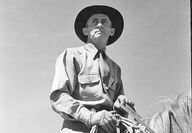
By Shane Dunning www.redshalereflections.com Rosebud County Special Deputy Jack Arnold knew the horse when he saw it. It belonged to the Brown Land and Cattle Company's 4D Ranch near Birney and had been reported stolen. Arnold formed a small posse and found the stolen horse in a corral near a makeshift cabin in southeastern Rosebud County, near the community of Gopher. The alleged thief was a German immigrant decidedly disliked by the local populace by the name of John Lang (or possibly Lange)....
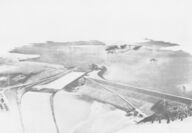
In two previous columns, I described the unsuccessful effort to build a dam on the Powder River three miles south of Moorhead during the 1940s. My first column outlined the general history of the project as the Reclamation Bureau prepared for the structure's construction. An initial congressional appropriation of $900,000 (in 1947) included the creation of a base camp for engineers and workers. My second column described how the opposition, based primarily in Wyoming, organized themselves and...

One holiday tradition I remember as a youngster was going to my grandmother's house for Christmas in Big Horn, Wyoming. These occasions usually gathered a host of aunts, uncles, cousins, and family friends. The house's social center (even during non-holidays) was the kitchen. Most visitors would be found visiting with my grandmother, my step-grandfather, or both. Only when large groups of visitors were present would the living room see significant traffic, such as our Christmas gatherings. The...

By Shane Dunning www.redshalereflections.com According to the precise definition, Rosebud County Sheriff Billy Moses died in the line of duty. On January 14, 1914, Sheriff Moses arrived at the Rosebud (the town) residence of Johnnie Burgess to serve a misdemeanor warrant for disturbance. Moses was dead only a few minutes later, shot in the chest and the neck. Law enforcement officers face terrible uncertainty, never knowing what awaits them, even in the most routine of duties. However, this was...
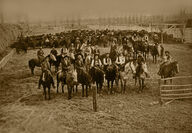
By Shane Dunning www.redshalereflections.com A year ago, my cousin showed me an old, sepia-colored family photograph of several cowboys in a corral. The picture's owner (my cousin) challenged me to see what I could find of the image's backstory. Included in the picture was my great-great-grandfather, Grant Dunning. An additional photo, obviously taken the same day, had a few bits of information written on the back. "Picture of Grant Dunning Cowboys. Guys in back are contractors William and...
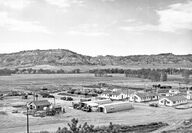
By Shane Dunning In my most recent column, I described the attempt in the late 1940s and 1950s to construct a dam on the Powder River south of Moorhead, Montana, just north of the border with Wyoming. In 1947, Congress appropriated $900,000 to make initial studies and build a camp for the engineers, staff, and construction workers. This initial appropriation was primarily the work of Wyoming's Senator Joseph C. O'Mahoney, a Democrat occupying an influential seat on the Senate Appropriations...
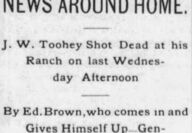
In 1886. the town of Birney was not located at its present location at the mouth of Hanging Woman Creek. The Birney post office was then located several miles south of present-day Ashland, which was then known as "Strader." The office was located concurrently with a trading store operated by the postmaster, John W. Toohey. Toohey was Birney's second postmaster, the first being trader A.M. Birney, for which the town was named. In March 1886, Mary O'Connell, the wife of Custer County Assessor...
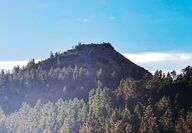
By Shane Dunning www.redshalereflections.com Deep into a dry creek valley in southern Rosebud County is a structure whose origins are mysterious. A small hill on the south side of the valley commands a broad view of the surrounding country. The top of the hill is flat, covering about 9,000 square feet. The dry creek runs into the Tongue River, and the entire structure is located on private land. The summit of this hill contains three man-sized rings constructed of stacked rock. One is on the...

By Shane Dunning www.redshalereflections.com The Race was On...75 Years Ago This June will mark the 75th anniversary of a most extraordinary Montana horse race. In 1947, the Range Riders Rodeo Association sponsored a 153-mile horse race, starting in Billings and ending at Miles City, just in time for the 1947 Range Riders Reunion. At 4:00 in the afternoon on Sunday, June 23, 1947, fifty-one horses and their riders gathered at the fairgrounds on Alkali Creek and started east along old highway 10...

My previous column described the violent back-and-forth between stock inspectors and a gang of livestock rustlers in southeast Montana. Much of the excitement was instigated by stock detective Billy Richardson or "Poker" Jim Roberts, suspected ringleader of the rustlers in the summer of 1921. Richardson sent a report to his boss, Montana's Chief Livestock Inspector Frank Lavigne, describing a day-long shootout with Roberts in southern Carter County. The situation came to attention of the newly...
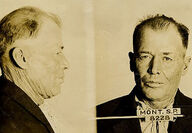
By Shane Dunning www.redshalereflections.com Last month the good people at the Powder River Examiner asked me to follow up on an item they discovered in their regular review of past issues. The Examiner issue in question was dated November 4, 1921, and headlined "Protection for Stockmen." The legitimate stockmen of southeastern Montana are being reassured of protection in the event they attend the big meeting called for November 19 at Piniele. At that time, an organization will be perfected to...

Find more from Shane at www.redshalereflections.com (Ed: A ghostly article presented by history columnist Shane Dunning for our Halloween week edition. Enjoy.) In January 1903, "a gentleman who has long resided in Rosebud County and spoke in all seriousness" gave a curious interview to the Billings Gazette. No, I'm not joking; neither have I become locoed by the many ghost stories of a political nature that have been sent out from our country. Thirteen years have passed since it first became noi...
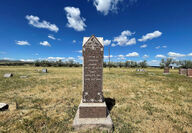
By Shane Dunning www.redshalereflections.com My great-great-uncle John L. Tucker was murdered on Otter Creek in 1911. His murder was, and remains, officially unsolved. Florence Shy, in Echoing Footsteps, wrote that "People were terribly upset over this but were too divided in their opinion, so no arrests were made." He was discovered shot in the back of his neck at his residence during the evening hours of March 28th. The body was found initially by Tucker's friend James Maxwell, who immediately...

By Shane Dunning www.redshalereflections.com During the summer of 1897, talk of war between the Northern Cheyenne and local settlers was seemingly on every tongue. John Hoover, a white sheepherder working for Fred Bollinger just north of Ashland, had been shot and killed, presumably by Indians. In a previous article, I described how a group of two hundred armed white men led by Levi Howes gathered outside the reservation and were persuaded by Custer County Sheriff Gibbs to seek justice through...
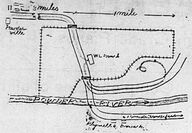
By Shane Dunning www.redshalereflections.com The term "Boot Hill" was commonly used for the cemeteries utilized when the deceased were violent criminals who "died with their boots on." The most common Boot Hill is located at Tombstone, Arizona, where Billy Clanton and the McClaury's were buried after the gunfight at the OK Corral. Another Boot Hill Cemetery is located at Powderville. Among those reputed to have been buried there is a man named "Deadwood Dick." This particular nickname has been...
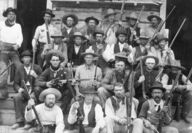
By Shane Dunning www.redshalereflections.com In late May of 1897, John Hoover was found dead. The young sheepherder, employed on Fred Barringer's ranch north of Ashland, had been missing for several weeks. One of several search parties eventually found Hoover's body near his sheep camp, situated very close to the boundary of the Northern Cheyenne Reservation. Hoover had been shot to death. "Three empty cartridges, horse hoofprints, and a beef carcass nearby persuaded Barringer and others that...
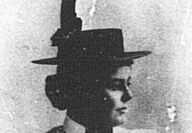
By Shane Dunning www.redshalereflections.com Last December, I presented an article on "the blackest crime to ever disgrace eastern Montana." That crime, the murder of Clemence "Winnie" Brown, occurred in 1897 just north of Ashland. Richard Dixon confessed to being the masked man who rode up on Winnie Brown and shot him in the stomach. In his confession, Dixon revealed that he had committed the crime at the behest of his employer George Geddes and his wife, Regina. He also implicated another...

By Shane Dunning www.redshalereflections.com "The Custer Wolf is Dead." So began a remarkable press release dated January 17, 1921, by the US Department of Agriculture Press Service. This incredible story was picked up by hundreds of newspapers throughout the country, describing the nearly six-month effort of Harry P. Williams to eliminate perhaps one of the most calculating and vicious livestock killers nature had ever produced. The USDA's press release entitled "World's Greatest Animal...

By Shane Dunning www.redshalereflections.com Sheridan County (WY) sheriff Willard Marshall entered the Rex Hotel in Sheridan on September 1, 1955, to question a transient ex-convict regarding a recent house burglary. As he went to the front desk, he inquired if an Art Brown was staying there. The proprietor said no one with that name was registered there. Marshall gave the man's description and confirmed that his suspect had been registered under the name "Bob King" at the hotel for three nights...

By Shane Dunning www.redshalereflections.com Sometimes a story seems too good to be true, and history is often an inexact science. Because of this, using oral history is often like handling a lit firecracker. You trust it will operate as intended and hope it does not blow up in your face. Recently I attended the memorial service of two well-regarded family members. While there, a cousin of my father's told a family story that fascinated me, partly because I didn't believe a word of it. I have re...
By Shane Dunning www.redshalereflections.com One of the most sordid events in Montana history took place a few miles north of Ashland on November 4th in the year 1897. Two teens, Clemence “Winnie” Brown and his brother Clarence Brown were hauling a load of lumber from Miles City on the Tongue River Road. As they neared the mouth of Lay Creek, they were joined by another brother, Hersey Brown, riding on horseback. Suddenly, a rider emerged from behind them traveling at a fast pace. He was masked and held a rifle in his hands. Hersey was the firs...